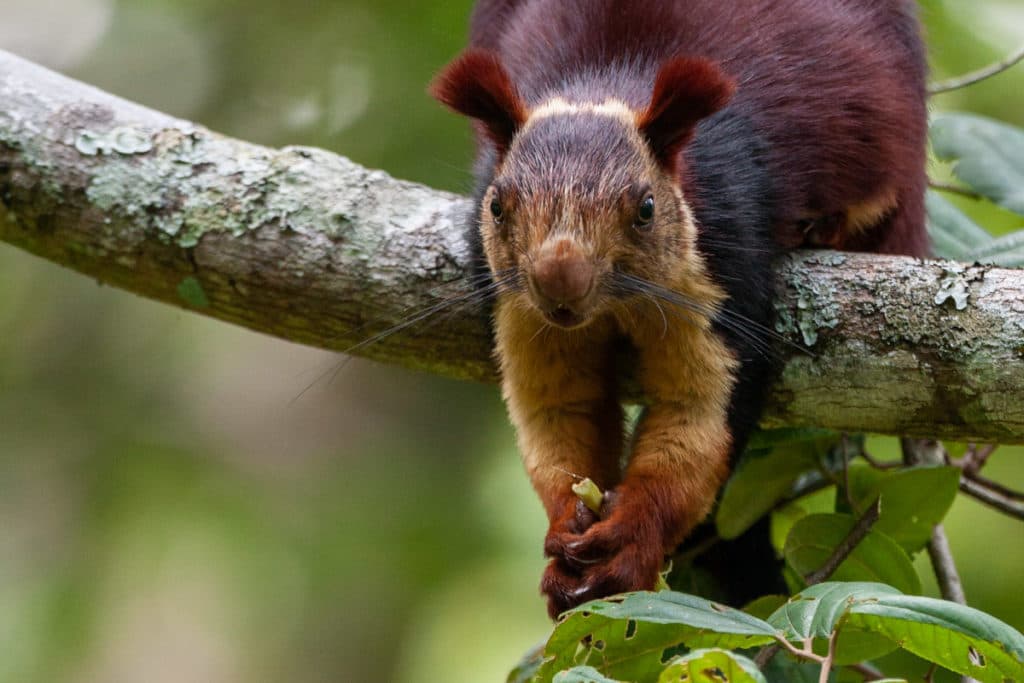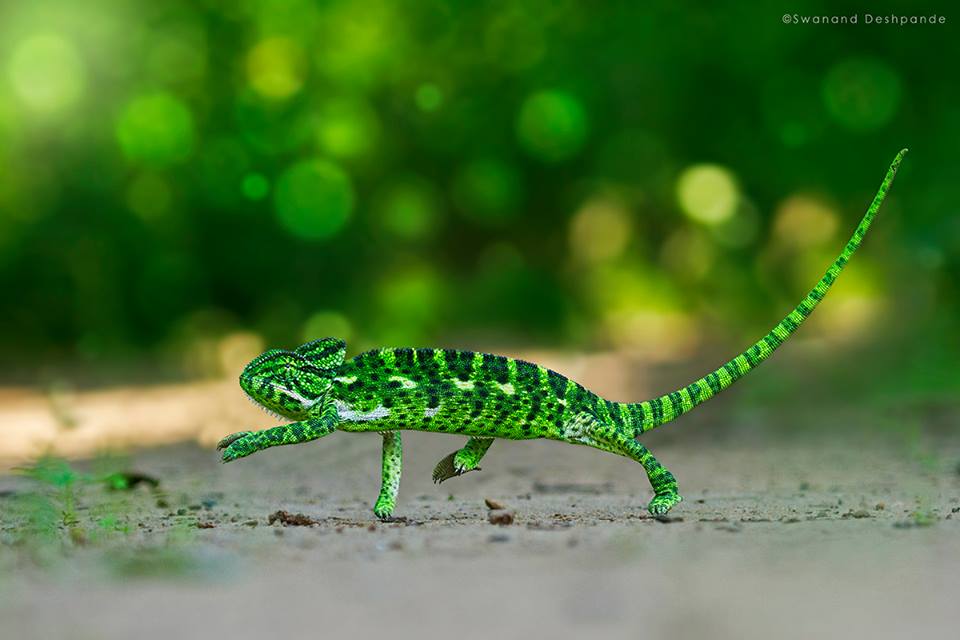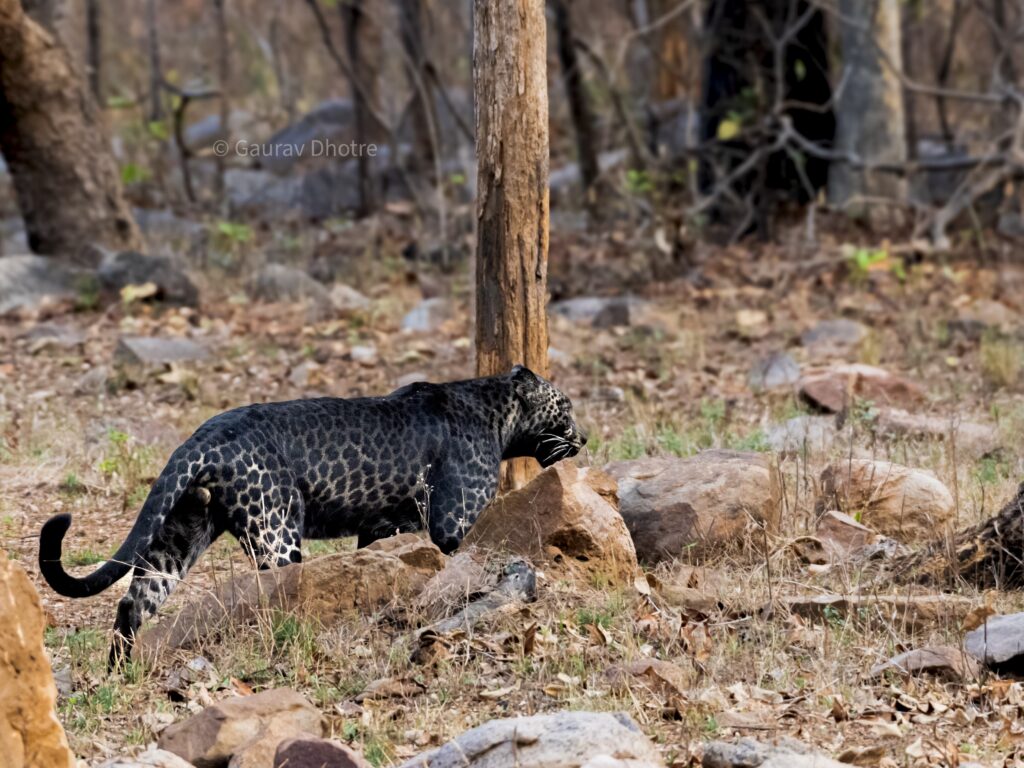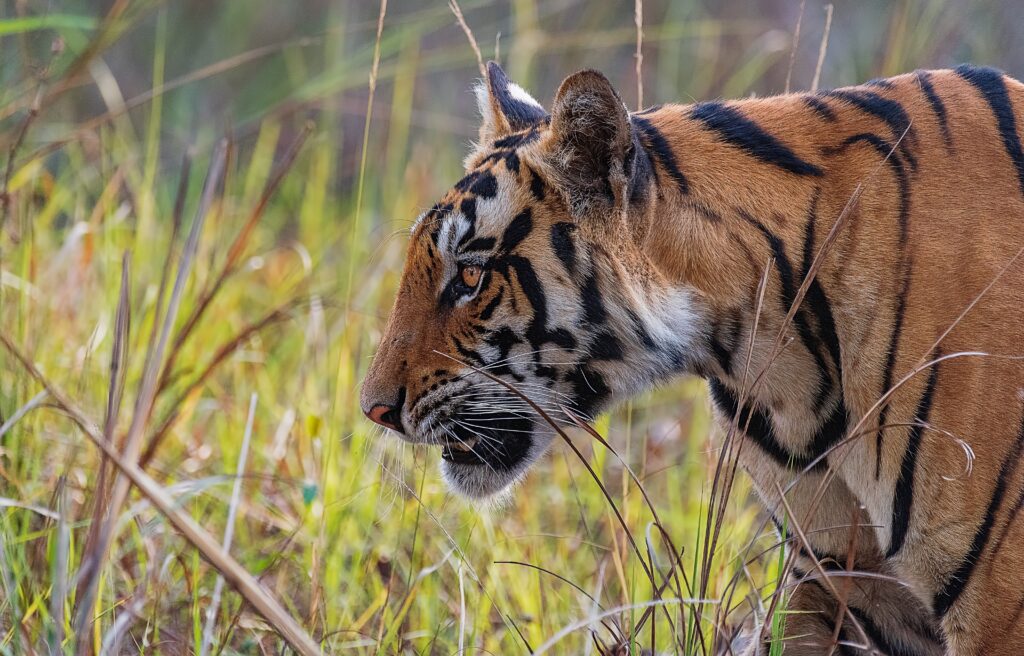India, with its vast and diverse ecosystems, is home to an incredible variety of wildlife. Among the most captivating of these creatures are the giant squirrels. These remarkable rodents, known for their vibrant colours and impressive size, are not just a marvel of nature but also play a crucial role in the forest ecosystems they inhabit.
Let’s explore the world of these fascinating creatures and learn about the species of giant squirrels found in India.
Types of Giant Squirrels Found in India
1. Indian Giant Squirrel (Ratufa indica)
The Indian Giant Squirrel, also known as the Malabar Giant Squirrel, is perhaps the most well-known among its relatives. This magnificent creature can grow up to 3 feet long, with its bushy tail accounting for about half of its length.

What truly sets the Indian Giant Squirrel apart is its stunning coat, which can range in color from deep maroon to a mix of black, brown, and orange. This vibrant coloration not only makes it one of the most striking animals in the forest but also serves as excellent camouflage among the dense foliage, helping it blend seamlessly into its surroundings.
Habitat and Distribution
The Indian Giant Squirrel is predominantly found in the Western Ghats, Satpura National Park in central India, and some parts of the Eastern Ghats. It inhabits dense tropical rainforests, where it spends most of its time in the upper canopy, leaping from tree to tree with incredible agility.
These squirrels prefer areas with tall, mature trees, which provide them with ample cover and food sources. Their range extends across several protected areas, ensuring that they have safe habitats, although habitat fragmentation still poses a significant threat.
Diet and Behaviour
This species is primarily herbivorous, feeding on a wide variety of fruits, nuts, flowers, and bark. It’s also known to occasionally consume insects, especially during times of food scarcity. The Indian Giant Squirrel is a solitary and shy animal, often hard to spot due to its tendency to stay high up in the trees.
Also Read: Best Places to See Tigers In India

However, its loud, distinctive call can often be heard echoing through the forest. These calls serve as a form of communication between individuals, especially during mating season or when alerting others of potential danger. They are diurnal, being most active during the early morning and late afternoon when the forest is cooler.
2. Grizzled Giant Squirrel (Ratufa macroura)
The Grizzled Giant Squirrel is smaller and more elusive than its Indian cousins. It gets its name from its unique fur, which is a mix of white, grey, and brown, giving it a grizzled appearance. This squirrel is also known for its slender build and relatively shorter tail, which is still bushy but less flamboyant compared to the Indian Giant Squirrel. Despite its smaller size, it is incredibly agile, capable of making long leaps between trees to escape predators or search for food.

Habitat and Distribution
The Grizzled Giant Squirrel is primarily found in the deciduous forests of Tamil Nadu and Kerala, particularly in the riverine forests of the Srivilliputhur Grizzled Squirrel Wildlife Sanctuary. It also inhabits some regions of Sri Lanka.
These squirrels prefer areas near rivers and streams, where the lush vegetation provides both food and shelter. Their distribution is highly localized, making them particularly vulnerable to habitat destruction. Conservation efforts in the region have focused on preserving the riparian forests that are crucial for their survival.
Diet and Behaviour
Similar to the Indian Giant Squirrel, the Grizzled Giant Squirrel’s diet consists of fruits, nuts, and flowers. However, it’s even more reclusive, making it a rare sight in the wild. This species is known for its remarkable ability to camouflage within the forest, making it difficult for predators and even humans to spot it.
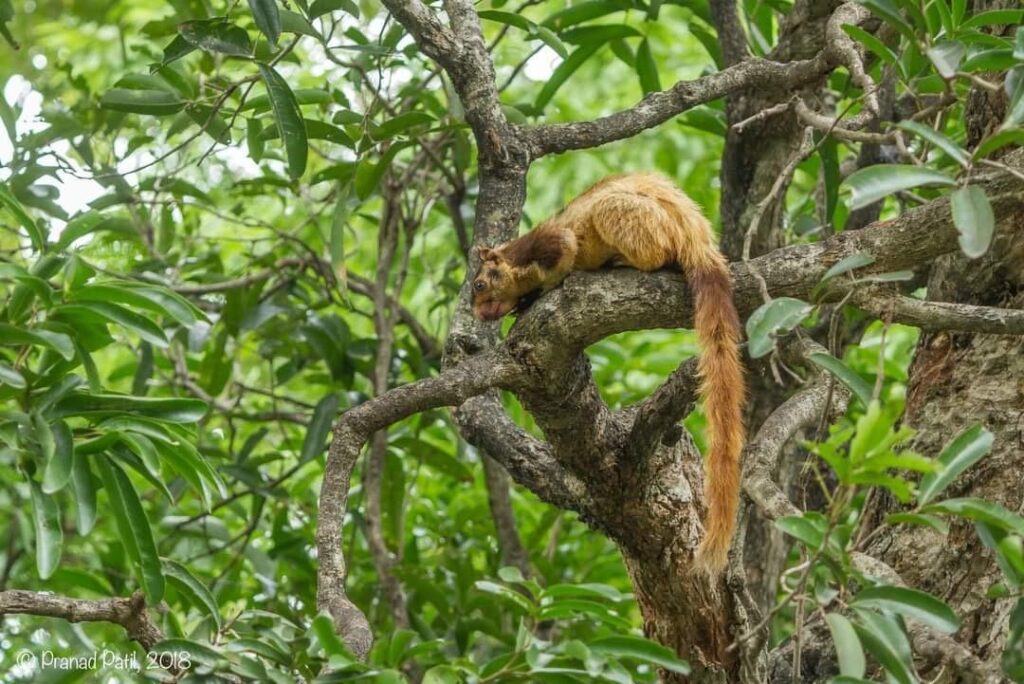
They are usually seen foraging during the cooler parts of the day and are known to store food in hidden caches, which helps them survive during lean periods. Their cautious nature means that they are often among the first to detect and react to potential environmental threats.
Also Read: Hornbills in India
3. Malayan Giant Squirrel (Ratufa bicolor)
The Malayan Giant Squirrel or Black Giant squirrel is the largest of the giant squirrels found in India, reaching lengths of up to 3.5 feet, including its tail. This species is characterized by its striking black upper body and contrasting white underparts, giving it a distinctive appearance.

The sharp contrast in its fur color not only makes it easily identifiable but also plays a role in its behaviour, as the darker upper body helps in absorbing sunlight, while the lighter underparts reflect excess heat, helping it regulate its body temperature in the humid forest environment.
Habitat and Distribution
While the Malayan Giant Squirrel is more commonly found in Southeast Asia, it also inhabits the northeastern parts of India, particularly in the forests of Assam, Arunachal Pradesh, and parts of the Eastern Himalayas.
These squirrels prefer dense, tall forests that provide them with both food and protection from predators. The presence of the Malayan Giant Squirrel is often an indicator of a healthy forest ecosystem, as they require large, undisturbed tracts of forest to thrive.

Diet and Behaviour
The Malayan Giant Squirrel is a frugivore, feeding mostly on fruits, seeds, and nuts, though it occasionally supplements its diet with leaves and small insects. It’s known for its powerful limbs and strong claws, which allow it to move effortlessly through the forest canopy, covering large distances in search of food. Unlike its Indian counterparts, the Malayan Giant Squirrel is more diurnal, meaning it’s active during the day, particularly during the early morning and late afternoon. This species is also known for its territorial nature, often defending its home range against intruders, including other squirrels.
Also Read: Black Panther in India
4. Indian Giant Flying Squirrel (Petaurista Philippensis)
The Indian Giant Flying Squirrel is another fascinating member of India’s rodent family. Unlike the other giant squirrels, this species is not limited to just the giant title—it can also glide across the forest. Measuring up to 2-3 feet from nose to tail, the Indian Giant Flying Squirrel has a large, furry membrane called the patagium, which stretches from its wrists to its ankles, allowing it to glide distances of up to 100 meters between trees.
Habitat and Distribution
The Indian Giant Flying Squirrel is found across a wide range in India, from the Himalayan foothills to the Western and Eastern Ghats and even in parts of central India. This adaptability allows it to thrive in various types of forests, from evergreen to deciduous.
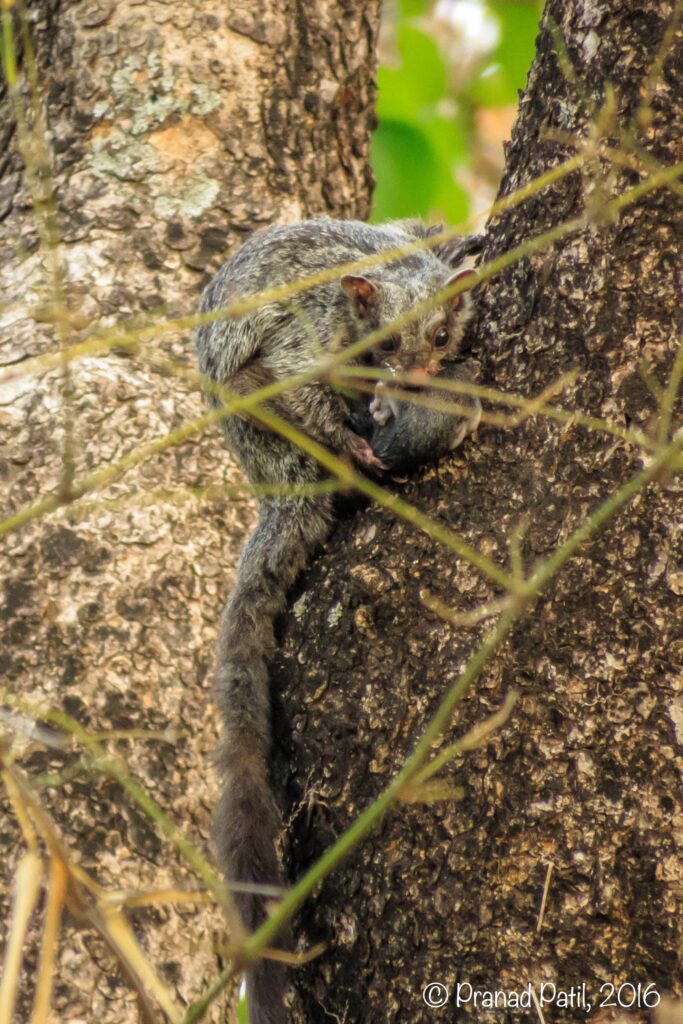
It prefers areas with a rich, dense canopy that offers both protection and a network of trees to glide between. These squirrels are nocturnal, coming out at dusk to begin their nightly activities, which include foraging and gliding through the treetops.
Diet and behaviour
Their diet primarily consists of fruits, nuts, and young leaves, but they are also known to consume flowers and occasionally insects. The Indian Giant Flying Squirrel is solitary and spends most of its life in the trees, rarely descending to the ground. Their large, prominent eyes are adapted for night vision, aiding in their nocturnal lifestyle.

These squirrels are also highly territorial and will aggressively defend their area from intruders. Their ability to glide is not just a form of locomotion but also a defence mechanism, allowing them to escape predators by gliding to a different tree.
Conservation Status and Threats
Almost all species of giant squirrels face various threats, primarily due to habitat loss caused by deforestation and human encroachment. The Indian Giant Squirrel is currently listed as Least Concern by the IUCN, but its populations are declining in some areas due to habitat fragmentation.
The Grizzled Giant Squirrel is classified as Near Threatened due to its limited distribution and the ongoing degradation of its riverine forest habitats. The Malayan Giant Squirrel is also listed as Near Threatened, primarily due to habitat destruction in the northeastern regions of India, where deforestation for agriculture and logging is rampant.
Conservation efforts are underway to protect these incredible creatures. Sanctuaries like the Srivilliputhur Grizzled Squirrel Wildlife Sanctuary in Tamil Nadu and protected areas in the Western Ghats and Northeastern India play a crucial role in preserving their habitats. Initiatives such as habitat restoration, anti-poaching measures, and community engagement are critical in ensuring the long-term survival of these species.
The giant squirrels of India are not just icons of the country’s natural heritage but also vital components of the forest ecosystems. Their presence indicates the health of the forests, and their protection is integral to preserving the biodiversity of these regions. By safeguarding the habitats of these magnificent squirrels, we not only protect them but also the countless other species that share their homes. The survival of these colorfull aerial acrobats is intertwined with the future of the forests they inhabit, making their conservation a priority for all who cherish the natural world.
So, the next time you venture into the forests of India, keep an eye out for these colorful aerial acrobats. Spotting one is a true testament to the wonders of nature that India has to offer.
Conclusion
The giant squirrels of India are remarkable creatures that play an essential role in the health of forest ecosystems. As their habitats face threats from deforestation and human encroachment, it’s vital that we support conservation efforts to protect these beautiful animals. By exploring India’s diverse forests, you can witness the rich wildlife and experience the natural beauty of these ecosystems.
For an unforgettable experience in the wild, consider embarking on a wildlife safari in India with Pugdundee Safaris. Their expertly guided tours offer a chance to not only spot giant squirrels but also explore the incredible biodiversity of India’s forests, including the majestic tiger. Supporting responsible wildlife tourism helps ensure the conservation of these creatures and their habitats for future generations.
Written by Vishal Sharma, Naturalist at Pugdundee Safaris

